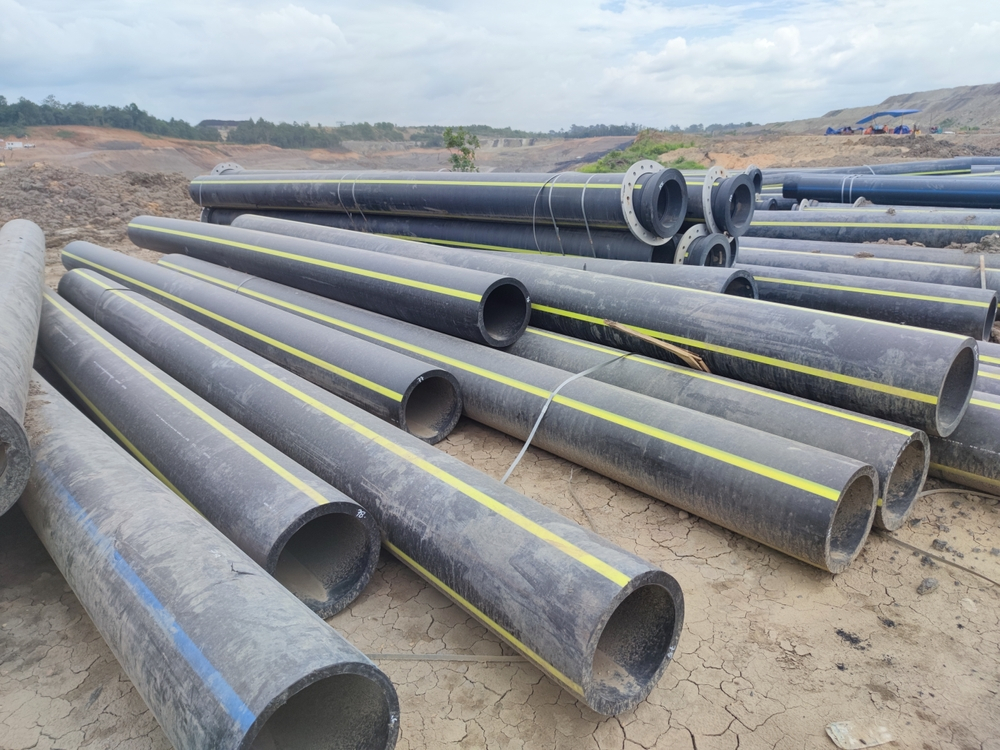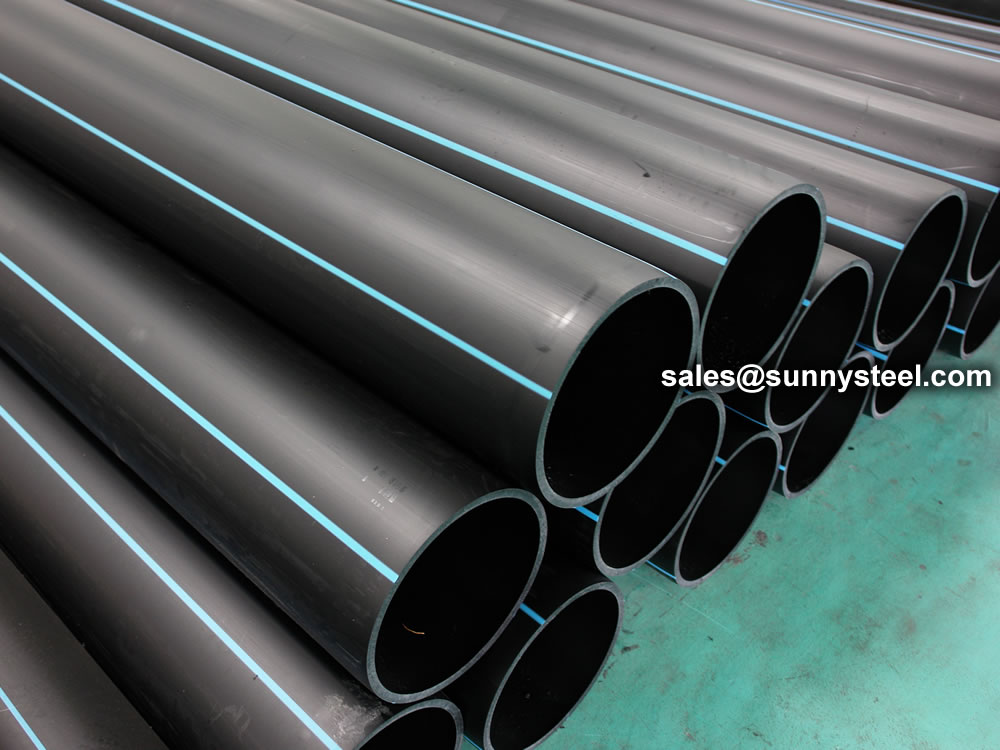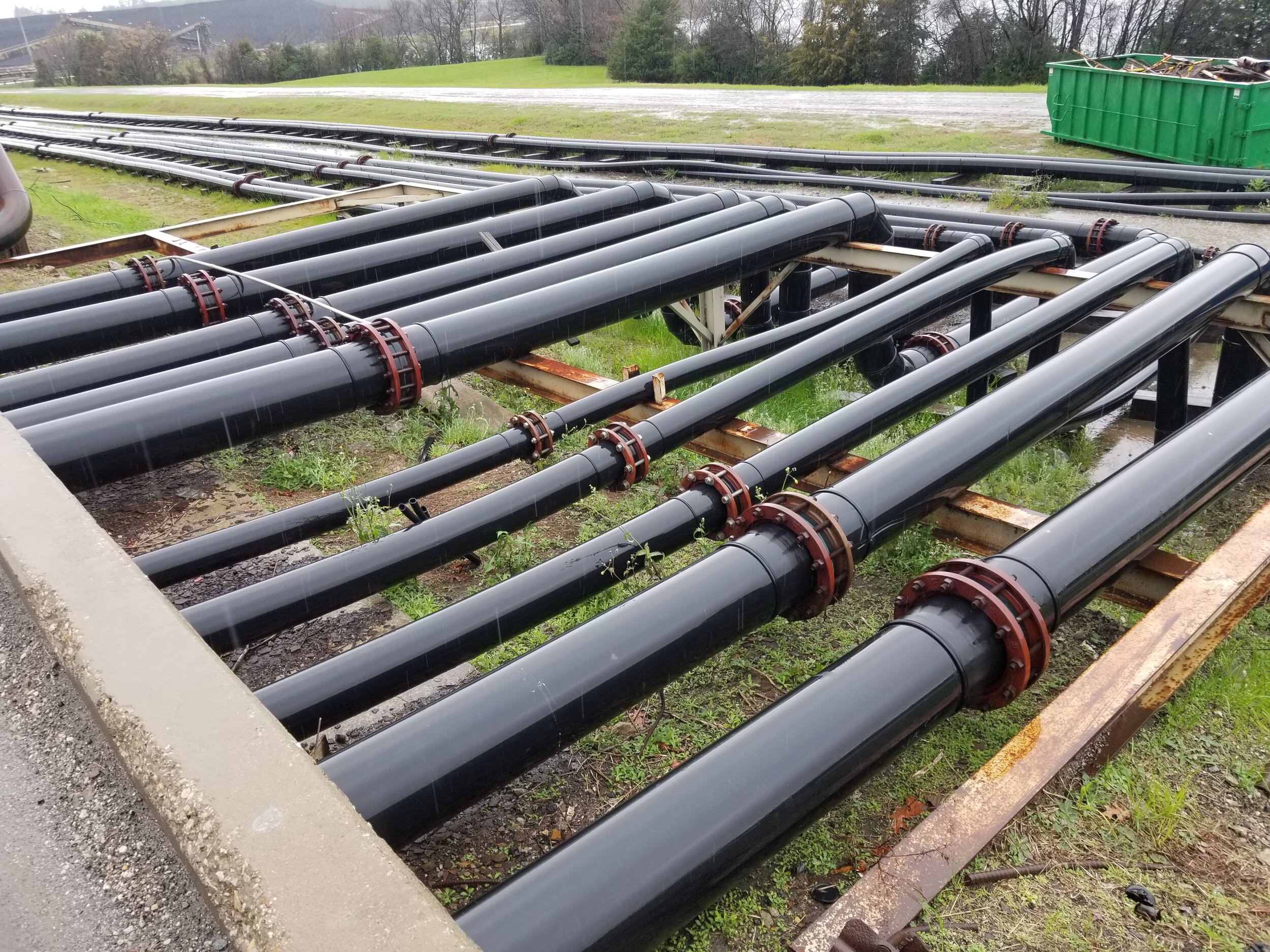American Plastics HDPE Pipe for Oilfield: Efficiency in Harsh Environments
Explore the Production Refine Behind High-Quality HDPE Pipeline and Its Applications
The manufacturing process of high-quality HDPE pipelines is intricate and systematic. It begins with the choice of basic materials that boost performance. Following this, ethylene goes through polymerization to form resin, which is then shaped through extrusion. Quality control is paramount, ensuring that the end product fulfills strict criteria. However, the journey of HDPE pipes does not finish with manufacturing. Their applications throughout various markets disclose a broader value worth taking a look at.
Understanding HDPE: Properties and Advantages

High-density polyethylene (HDPE) is a versatile thermoplastic known for its resilience and resistance to various ecological variables. This product shows superb tensile stamina, making it appropriate for demanding applications. Its low-density framework adds to a light-weight product, assisting in ease of dealing with and installment. HDPE likewise showcases amazing resistance to chemicals, which minimizes deterioration when subjected to extreme substances.
The product's reduced wetness absorption further boosts its longevity, making it suitable for use in pipes and storage containers. In addition, HDPE is resistant to ultraviolet (UV) radiation, ensuring that products preserve their integrity also when exposed to sunshine. Its versatility allows for the creation of intricate shapes without jeopardizing toughness. The environment-friendly nature of HDPE, usually originated from recycled products, includes to its allure, promoting lasting techniques in manufacturing. Generally, these residential or commercial properties and benefits make HDPE a recommended choice for numerous industrial and consumer applications.
Basic Material Choice for HDPE Manufacturing
The option of raw materials for HDPE production is vital to validate the end product meets the wanted specs and high quality standards. High-density polyethylene (HDPE) is primarily generated from polymerized ethylene, originated from fossil fuels such as all-natural gas or crude oil. The top quality of these feedstocks significantly influences the mechanical and thermal properties of the final HDPE.
Ingredients likewise play a significant duty in boosting HDPE's efficiency, including anti-oxidants, UV stabilizers, and colorants, which enhance longevity and resistance to ecological elements. The option process have to take into consideration not only the chemical structure of the raw materials but additionally their processing characteristics to guarantee reliable production.
Furthermore, the sourcing of resources ought to focus on sustainability and compliance with ecological guidelines, as accountable techniques are critical in today's market. Eventually, careful raw material selection lays the structure for creating high-quality HDPE pipelines appropriate for diverse applications.
The Extrusion Process: Forming HDPE Pipe
The extrusion process plays a crucial role fit HDPE pipelines, starting with meticulous material prep work techniques that assure ideal flow and consistency. Similarly vital is the style of the die, which straight affects the last measurements and surface high quality of the pipeline. Together, these aspects add substantially to the efficiency and high quality of HDPE pipeline manufacturing.
Material Prep Work Methods
Efficient production of HDPE pipes begins with precise material prep work strategies, particularly the extrusion procedure. During this phase, high-density polyethylene material is very first dried out to eliminate dampness, making sure optimal circulation features. The resin is then fed into the extruder, where it goes through heating and melting, changing right into a thick state. This home heating process is carefully managed to preserve the material's integrity and efficiency. The molten HDPE is forced through a die, shaping it right into a continuous pipe form. Correct temperature administration during extrusion is necessary, as it directly influences the product's buildings and the last product top quality. As soon as formed, the HDPE pipeline is cooled and cut to specified sizes, all set for succeeding processing and applications.
Die Design Importance
Accuracy in die layout plays a vital role in the extrusion process of HDPE pipes. The die serves as the final shaping device, directly influencing the pipeline's measurements, wall thickness, and surface area coating. A well-designed die assurances uniform material flow, reducing defects such as abnormalities and vulnerable points. The geometry of the die have to be enhanced to fit the particular homes of HDPE, including its viscosity and thermal actions during extrusion. Additionally, the cooling rate of the product as it passes with the die can markedly influence the pipeline's structural honesty. Spending in advanced die modern technology is essential for producers intending to produce high-grade HDPE pipes that fulfill sector requirements and customer expectations.
Top Quality Control Steps in HDPE Manufacturing
Different elements affect the high quality of HDPE pipeline manufacturing, efficient quality control actions are vital to guarantee consistency and integrity in the last product (hdpe pipe suppliers Midland TX). Key high quality control methods consist of extensive material assessment, validating that the raw polyethylene meets established criteria for purity and density. During the extrusion process, specifications such as temperature level, pressure, and cooling time are closely kept track of to keep dimensional precision and structural stability
On top of that, post-production screening is vital; suppliers commonly conduct hydrostatic examinations to evaluate the pipeline's strength and resistance to stress. Aesthetic evaluations for hvac copper fittings surface area issues better boost quality control. Certification from pertinent requirements companies, like ASTM or ISO, offers an added layer of trustworthiness. By applying these complete quality assurance measures, makers can minimize issues, improve performance, and ensure that the HDPE pipelines meet the certain needs of various applications, inevitably causing customer fulfillment and count on the item.
Applications of HDPE Pipe Throughout Industries
HDPE pipes are utilized across various fields due to their resilience and convenience. In water circulation systems, they guarantee effective distribution, while in wastewater management, they supply trustworthy services for waste transportation. Additionally, farming irrigation networks benefit from HDPE's resistance to rust and versatility, making it an excellent choice for contemporary farming methods.

Water Distribution Solutions
A considerable variety of industries count on high-density polyethylene (HDPE) pipes for effective water distribution systems. Recognized for their resilience and resistance to rust, HDPE pipes are extensively used in local water networks, agricultural watering, and commercial applications. Their light-weight nature facilitates very easy handling and setup, minimizing labor expenses and time. Furthermore, HDPE pipelines can suit various pressure degrees, making them suitable for both reduced and high-pressure systems. hdpe pipe suppliers Midland TX. The flexibility of the material permits smooth integration into existing facilities, reducing the requirement for considerable excavation. Furthermore, HDPE's resistance to chemical leaching guarantees that the water provided stays risk-free and tidy, making it an ideal option for keeping the high quality of drinkable water across different fields
Wastewater Administration Solutions
Reliable water distribution systems also lead the way for ingenious wastewater management services, where high-density polyethylene (HDPE) pipes play a substantial role. Renowned for their longevity and resistance to deterioration, HDPE pipes are excellent for transferring wastewater in different setups. Their versatility enables easy installation in complicated environments, lessening the need for comprehensive excavation. In addition, HDPE's smooth interior surface area reduces friction, improving flow prices and efficiency. These pipes are likewise resistant to chemical leaching, making certain that contaminants do not jeopardize the surrounding atmosphere. Industries, communities, and treatment facilities progressively count on HDPE pipelines for their dependability and durability, making them a preferred option for modern-day wastewater administration systems. This versatility emphasizes the crucial importance of HDPE pipes across numerous applications.
Agricultural Watering Networks
Agricultural watering networks profit greatly from making use of high-density polyethylene (HDPE) pipelines, which provide efficient and reputable water delivery to plants. HDPE pipes are lightweight, making them easy to move and mount, while their versatility enables for different setups in varied terrains. These pipelines show exceptional resistance to corrosion, chemicals, and UV radiation, ensuring resilience in harsh farming settings. In addition, their smooth interior surface area lessens friction loss, optimizing water circulation and minimizing energy prices related to pumping. The durability of HDPE pipelines, commonly surpassing half a century, adds to reduce maintenance and substitute expenses. Farmers increasingly depend on HDPE pipes to enhance irrigation performance and promote sustainable farming practices, inevitably leading to improved crop returns and source conservation.

Future Fads in HDPE Pipe Innovation
As the demand for lasting and reliable facilities expands, improvements in HDPE pipeline innovation are poised to change numerous markets. Arising fads consist of the combination of smart modern technologies, such as sensing units and IoT capabilities, which promote real-time monitoring of pipeline problems, reducing maintenance prices and avoiding leakages. In addition, the advancement of innovative manufacturing methods, such as 3D printing, is allowing the production of complex, personalized pipeline designs that accommodate particular task needs.
The focus on recycling and circular economy methods is driving the development of HDPE pipelines made from recycled products, boosting sustainability. Boosted jointing methods, such plastic pex fittings as electro-fusion and mechanical installations, are additionally improving setup effectiveness and dependability. Ultimately, the growing focus on ecological laws is pressing makers to take on greener manufacturing procedures, making certain that HDPE pipes not just fulfill market requirements however additionally foster a more lasting future for framework advancement.
Regularly Asked Questions
How Does HDPE Contrast to Various Other Plastic Materials?
HDPE outmatches numerous other plastic products relating to toughness, chemical resistance, and adaptability. Its reduced density and high tensile strength make it home ideal for numerous applications, often surpassing choices in both performance and long life.
What Are the Environmental Influences of HDPE Manufacturing?
The environmental effects of HDPE manufacturing include greenhouse gas discharges, energy usage, and potential air pollution from manufacturing procedures. In addition, improper disposal can bring about soil and water contamination, elevating worries about lasting ecological impacts.
Can HDPE Pipes Be Reused?
Yes, HDPE pipes can be reused. Many facilities approve utilized HDPE for processing, transforming it right into brand-new products. This recycling adds to sustainability efforts, decreasing plastic waste while saving sources and power in the manufacturing cycle.
What Is the Life Expectancy of HDPE Pipes?

Just How Do Temperature Level Variants Affect HDPE Pipeline Efficiency?
Temperature variations significantly affect HDPE pipe performance, impacting versatility and toughness. Heats can bring about softening, while reduced temperature levels may trigger brittleness, ultimately affecting the pipeline's longevity and viability for numerous applications in diverse atmospheres.